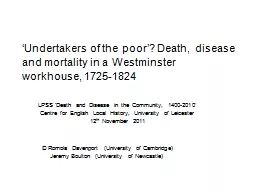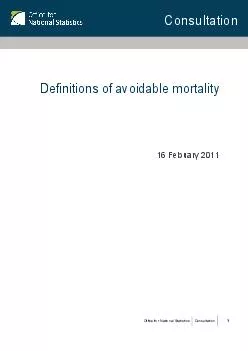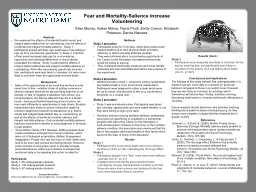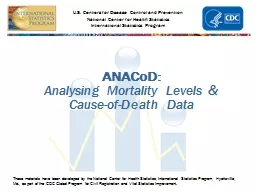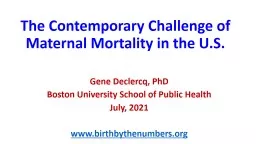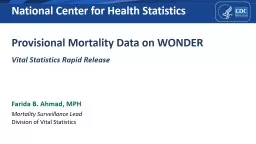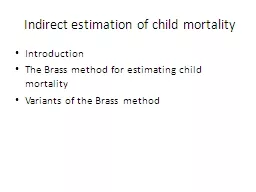PPT-‘Undertakers of the poor’? Death, disease and mortality
Author : pamella-moone | Published Date : 2018-01-16
Romola Davenport University of Cambridge Jeremy Boulton University of Newcastle LPSS Death and Disease in the Community 14002010 Centre for English Local History
Presentation Embed Code
Download Presentation
Download Presentation The PPT/PDF document "‘Undertakers of the poor’? Death, di..." is the property of its rightful owner. Permission is granted to download and print the materials on this website for personal, non-commercial use only, and to display it on your personal computer provided you do not modify the materials and that you retain all copyright notices contained in the materials. By downloading content from our website, you accept the terms of this agreement.
‘Undertakers of the poor’? Death, disease and mortality: Transcript
Download Rules Of Document
"‘Undertakers of the poor’? Death, disease and mortality"The content belongs to its owner. You may download and print it for personal use, without modification, and keep all copyright notices. By downloading, you agree to these terms.
Related Documents

